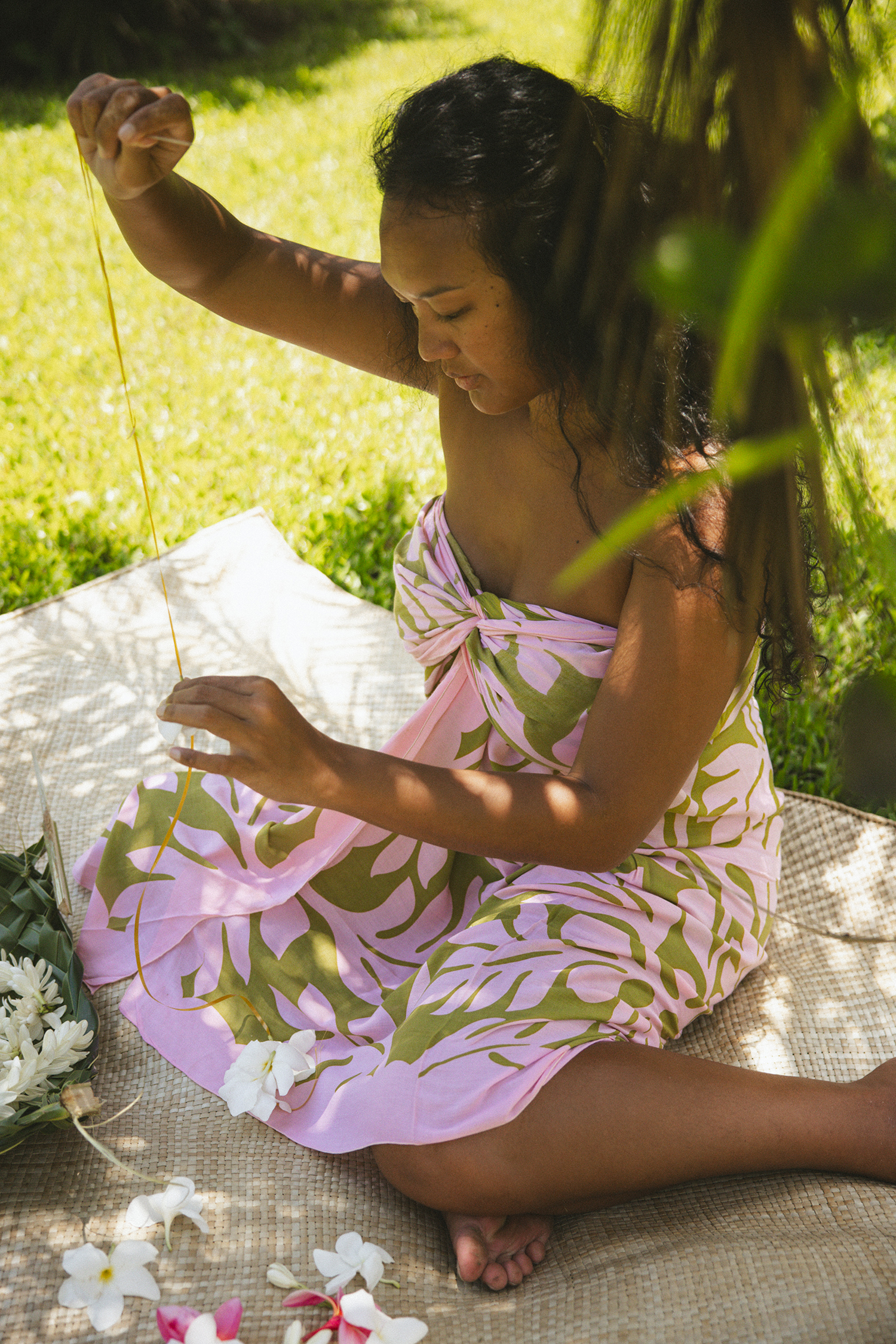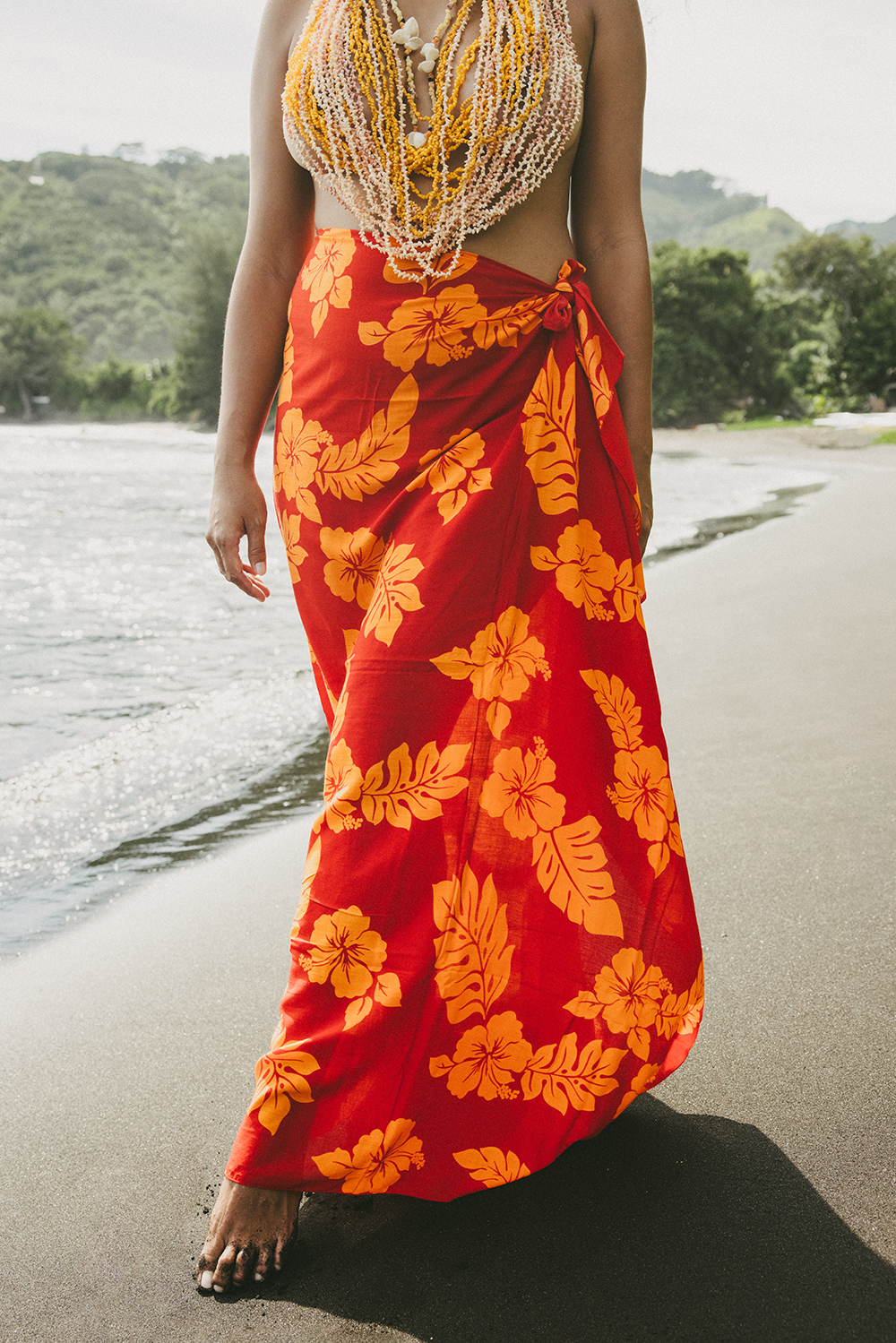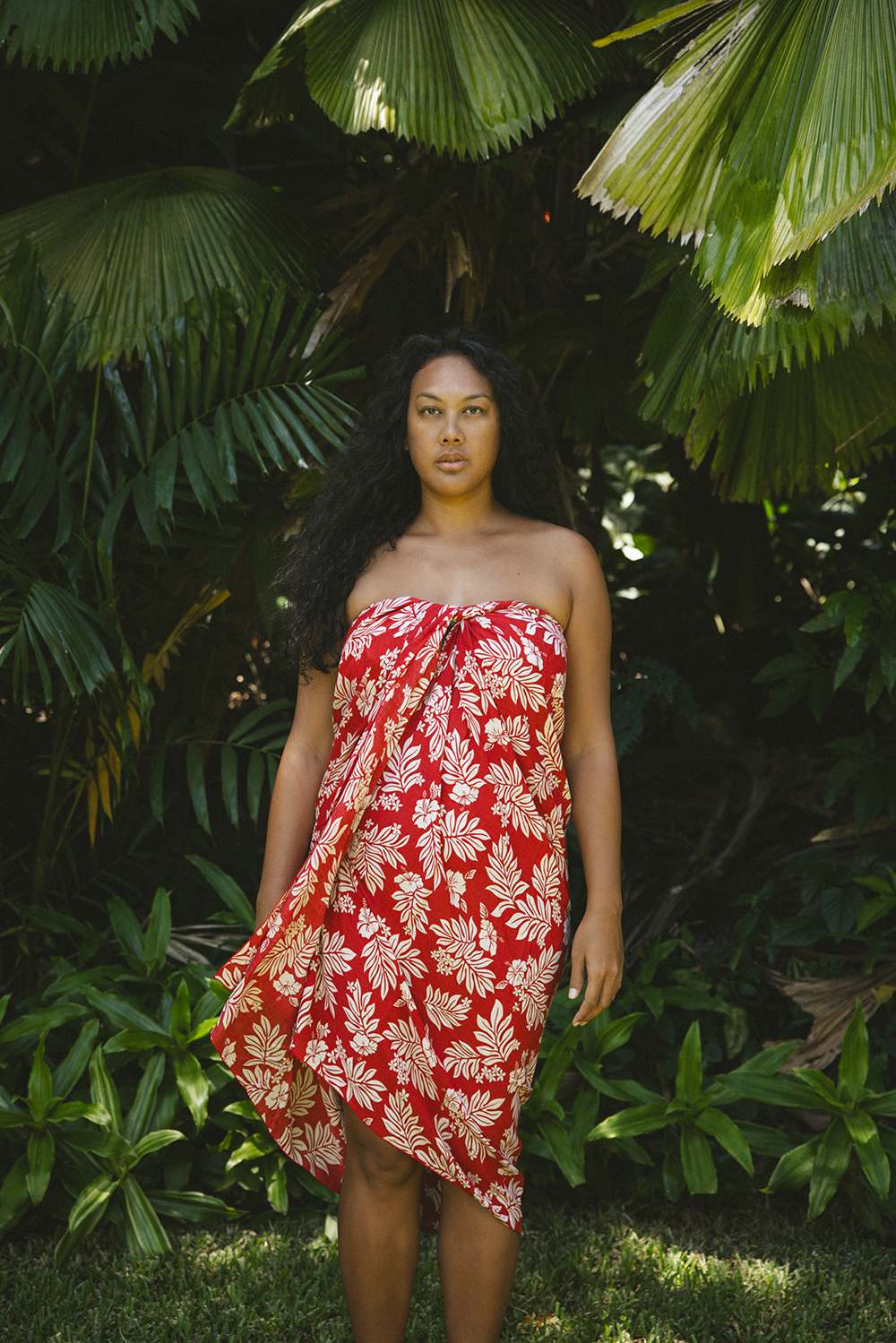The Timeless Elegance of the Pareo: A Polynesian Essential.
5min-read article.

The pareo, also known as pāreu, is a striking emblem of Polynesian culture, celebrated for its remarkable versatility and visual appeal. This vibrant piece of fabric serves multiple purposes—it can be worn as a wrap, cover-up, trendy top, headscarf, towel, or even a lightweight blanket against pesky mosquitoes. Essential for life under the tropical sun, the pareo knows no gender boundaries; both men and women have embraced it as a staple in their wardrobes for generations. Originally introduced to the islands by Western maritime traders, the pāreu swiftly integrated into the socio-economic and artistic fabric of Polynesia, evolving into a powerful symbol of cultural identity and resilience.
A Rich Heritage: The Story of the Pareo.
The pareo has a captivating history that spans over 300 years, underscoring its importance in Polynesian culture. In the 1700s, Tahitians primarily wore garments made from beaten bark, known as ‘tapa.’ The arrival of cotton cloth from European traders presented a more practical and comfortable alternative, perfectly suited for the tropical climate. By 1769, brightly colored flowered cotton quickly emerged as a sought-after trade item across the islands.

Cultural Fusion: Redefining Fashion in Paradise.
As Western fashion made its mark, Tahitians expertly adapted the pareo to reflect their unique identity. Women transformed their pāreu into skirts worn over long missionary dresses, while men creatively styled them around their hips or draped them over shirts. This fusion of styles not only incorporated Western influences but also highlighted the vibrant aesthetic that characterizes Polynesian culture.
The Artistic Evolution: Transforming Trade into Tradition.
In the late 1800s, Tahiti blossomed into a commercial hub, leading to an influx of cotton cloth. This surge inspired a wave of distinctive South Seas prints, celebrated for their bold colors and unique designs. Travelers like Constance Cumming marveled at these artistic expressions, reinforcing the pareo’s status as a powerful symbol of Polynesian identity and creativity.

The pareo stands as a vibrant testament to the practicality and cultural richness of Polynesian heritage, remaining a cherished garment to this day. Beyond its versatile uses in daily life, it symbolizes a legacy of artistic expression and cultural resilience that thrives amid a changing world. Worn by locals and visitors alike, the pāreu beautifully illustrates the dynamic interplay between tradition and modernity—a remarkable piece of fabric that not only endures but also celebrates the enduring spirit of Polynesian culture. Indeed, the pareo reinforces the idea that some essentials are timeless, woven into the very fabric of identity and creativity across generations.
